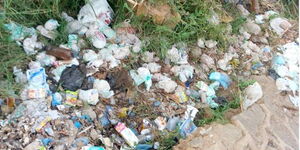Adoption of the flat roofing technique has accelerated in recent years, despite being around for centuries.
A flat roof is almost level in contrast to sloped roofs which adopt a letter A shape. They are made with the same materials as heavily-inclined roofs but require water resistance.
Most flat roofs are set at ten-degree angles or less. Construction experts advise homeowners and landlords using this technique to prioritise drainage.
Below are the proven methods to waterproof a flat roof.
Water Resistant Terrazzo Flooring
Terrazzo is a water-resistant flooring system ideal for any commercial or residential property.
This water-resistant flooring system requires minimal repairs and no replacements during its lifecycle.
Use of Bitumen
The best part about bitumen is that it comes in peel-and-stick pieces, thus easy to apply.
You can get peel-and-stick asphalt that works just as well as poured asphalt and is more affordable than other roofing options.
Many roofers use reinforced bitumen membranes to install permanent waterproofing. The roofer starts by installing two or three layers of material and bonding it with bitumen.
They finish up by applying polyester to the material to add a waterproof membrane.
Vegetation Roofing
This is one of the oldest roofing types. Here, clay and thatch roofs became the standard.
In this type of roofing, vegetation grows over the waterproofing system.
Use of a Sealant
A sealant is a type of paste or paint intended to prevent moisture from passing, thus creating a barrier at weaker points along a roof.
Sealants are typically installed in two stages. First, the sealant is laid down and sculpted to a particular area. Then, it's left to cure and harden until it is ready to face the elements.
A roofing sealant is a quick and easy solution that is simple and easy to use, and you don’t require an expert. Although it is a quick fix, the sealant lasts a long time.
Homeowners are spoiled for choice with ways to waterproof their roofs. It is important to choose the best method to avoid spending more money on repairs.
Leakages
Rainy seasons should not only be used to assess leaking flat roofs. Some of the other signs are;
Brown patches on the roof
The underlayment cannot hold any moisture due to condensation or rainfall when it wears out. Instead, the water seeps through the roof slowly. Later, you’ll notice brown patches on the ceiling or some dampness.
Exterior damage on the shingles
If you notice discolouration on a particular part of the roof, the chances are high that water is penetrating and needs repairs. Another sign can be peeling paint and wet spots on a specific roof part.
Drips when it rains
A dripping ceiling when it rains is a perfect sign of leaks. However, the leaking could be due to plumbing and roof construction defects, but you need to improve the waterproofing.
Homeowners should schedule inspections to detect any problems with the roofs before they get worse.












